
The Tillamook County Creamery Association (TCCA) is a farmer-owned dairy cooperative headquartered in Tillamook County, Oregon, United States. The association manufactures and sells dairy products under the "Tillamook" brand name. Its main facility is the Tillamook Creamery, located two miles north of the city of Tillamook on U.S. Route 101.
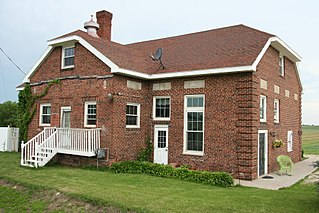
The Viola Creamery is a rural building on the National Register of Historic Places in Viola, Minnesota, United States. It was designed by architect Harold Crawford and in built in 1924.
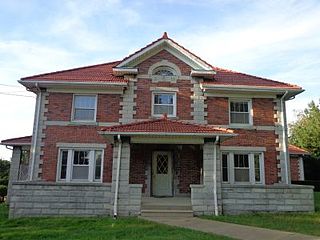
The O. C. Barber Creamery, built in 1909, is an historic farm building located at 365 Portsmouth Avenue on the Anna-Dean Farm in Barberton, Ohio. It was built by American businessman and industrialist Ohio Columbus Barber, the developer of both Barberton, which he envisioned as a planned industrial community, and the nearby 3,500-acre (14 km²) Anna-Dean Farm, which he envisioned as a prototype for modern agricultural enterprise. Barber was called America's Match King because of his controlling interest in the Diamond Match Company.
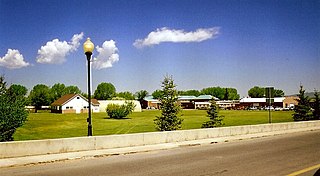
The Wyoming State Hospital, once known as the Wyoming State Insane Asylum, is located in Evanston, Wyoming, United States. The historic district occupies the oldest portion of the grounds and includes fifteen contributing buildings, including the main administrative building, staff and patient dormitories, staff apartments and houses, a cafeteria and other buildings, many of which were designed by Cheyenne, Wyoming architect William Dubois. Established in 1887, the historic buildings span the period 1907-1948. At one point it was common for new hall additions to be named after the counties in Wyoming. The recent addition of Aspen, Cottonwood, and Evergreen halls do not follow this trend.

This is a list of the National Register of Historic Places listings in Olmsted County, Minnesota. It is intended to be a complete list of the properties and districts on the National Register of Historic Places in Olmsted County, Minnesota, United States. The locations of National Register properties and districts for which the latitude and longitude coordinates are included below, may be seen in an online map.

The TA Ranch was the site of the principal events of the Johnson County Range War in 1892. The TA was established in 1882 as one of the first ranches in Johnson County, Wyoming. The TA is the only intact site associated with the range war, with trenches used by both sides still visible and scars on the nearby buildings. The ranch also documents the expansion and development of cattle ranching in Wyoming.

The Moody Barn is a round barn in Chisago Lake Township, Chisago County, Minnesota, United States. The farm was first homesteaded in 1871 by Elof and Eva Modig, who emigrated from Sweden. The couple raised five children and grew wheat on their farm, as was common in the 1870s. By the 1890s Minnesota farming had begun to diversify, with cheese and butter production becoming popular and distributed by cooperative creameries. In 1915 Charles Moody, one of the sons, decided to build a modern round barn.

The West Hill Covered Bridge, also known as the Crystal Springs Covered Bridge is a wooden covered bridge that crosses West Hill Brook on Creamery Bridge Road in Montgomery, Vermont. It is one of six surviving 19th-century bridges built in Montgomery by the brothers Sheldon & Savannah Jewett. It was listed on the National Register of Historic Places in 1974.

The Lakeview Tithing Office, also known as the Bunnell Creamery, is a historic building located in Provo, Utah, United States. It is listed on the National Register of Historic Places.
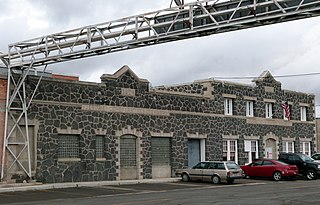
The Jerome Cooperative Creamery is a cooperative creamery and also refers to historic lava rock structures used by the creamery on Birch Street in Jerome, Idaho, United States. The structures were listed on the National Register of Historic Places on September 8, 1983. They were built in 1915, 1924, and 1933 by master stonemason H.T. Pugh who popularized the use of lava rock in the Jerome area.

The Borden Milk Co. Creamery and Ice Factory is a historical site in Tempe, Arizona. Built originally as an ice plant, it was altered to also produce pasteurized bottled milk. The Pacific Creamery Plant was sold in 1927, and it operated under the Borden name until its closure in 1953. The building stood empty until it was reopened as Four Peaks Brewery, a restaurant and regional brewery. The Borden operation had enough impact on the city that a new park was designated "Creamery Park" in 1999.

The Godahl Store is a historic consumers' co-operative general store established in the unincorporated community of Godahl in 1894. It was listed on the National Register of Historic Places as the Nelson and Albin Cooperative Mercantile Association Store in 1987 for its local significance to commerce. The store was in business through 2016.

The Bellows Falls Co-operative Creamery Complex is a historic industrial property in Bellows Falls, Vermont. Developed over a period of about 40 years beginning c. 1906, the complex, with two surviving buildings, it represents one of Vermont's largest commercial enterprises of the period. The property, located on the eastern side of Bellows Falls Island, was listed on the National Register of Historic Places in 1990.

The Creamery Covered Bridge is a historic covered bridge in West Brattleboro, Vermont. Now closed to traffic, the Town lattice truss bridge formerly carried Guilford Road across Whetstone Brook, just south of Vermont Route 9. Built in 1879, it is Brattleboro's last surviving 19th-century covered bridge.

The Clarks Grove Cooperative Creamery is a historic creamery in Clarks Grove, Minnesota, United States. It was established in 1890 as one of the first cooperative creameries in Minnesota. The Clarks Grove Cooperative Creamery used new technology and a well-organized cooperative system. It became a model for the Minnesota dairy industry. Ten years later, there were more than 550 cooperative creameries in the state.

Bridge 22, also known as the Creamery Bridge is a historic pony truss bridge, carrying Old Creamery Road across the Waits River in Bradford, Vermont. Built in 1934, it is well-preserved late example of a bridge style then passing out of fashion. It was listed on the National Register of Historic Places in 2010.

The Cheyenne High School at 2810 House Avenue in Cheyenne, Wyoming is a Late Gothic Revival-style building which was built in 1921. It has also been known as Central High School and as Laramie County School District No.1 Administration Building and was listed on the National Register of Historic Places in 2005.
The Brigham City Co-op was one of the most successful cooperative enterprises of the Mormons in Utah.

The Karnes Stone Barn, near Carbondale in Osage County, Kansas, was built in 1877. It was listed on the National Register of Historic Places in 2004.
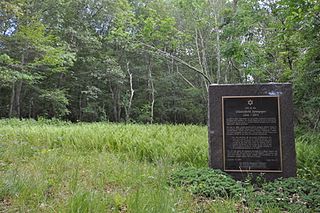
The New England Hebrew Farmers of the Emanuel Society Synagogue and Creamery Site is a complex of historic archaeological sites near the junction of Connecticut Routes 161 and 85 in Montville, Connecticut. The sites include that of a late 19th-century synagogue, and the remains of a creamery complex operated by local Jewish dairy farmers that was located nearby. It was one of the first rural Jewish settlements in the state, supported financially by the Baron de Hirsch. The site was listed on the National Register of Historic Places in 2012.




















